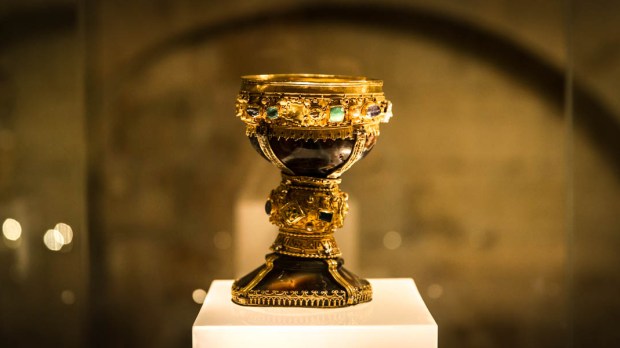Partly thanks to the legend of King Arthur and the Quest of the Holy Grail, history and legend have often merged when it comes to locate the Holy Grail —the chalice used by Jesus during the Last Supper.
In 1910, the recovery of a rare artifact dating from the 1st century A.D. in Antioch, modern-day Antakya in central Turkey, was believed to be the Holy Grail until it was later found to be dated from only about the year 500, during the Byzantine Empire. In the book Kings of the Grail, published in 2014 by Spanish historians Margarita Torres Sevilla and Jose Miguel Ortega del Rio, it is suggested that the Holy Grail traveled from Jerusalem to Europe and is currently preserved in the Basilica of San Isidoro of León in northern Spain. But, as BBC travel reports, the most widely acknowledged site of the Holy Grail is the Basilica of the Assumption of Our Lady of Valencia, in southern Spain, where a richly decorated cup is preserved inside a golden case just beyond the altar. The actual santo caliz is the part at the top, a cup made of agate stone and polished with myrrh, measuring 2.7 inches in height and 3.8 centimeters in width and dating to 100-50 B.C. The two gold handles and the richly decorated base, featuring pearls, emeralds and rubies, were probably a later addition.
It is said that Valencia’s santo caliz traveled out of Jerusalem thanks to St. Peter, who took it to Rome to use it for the Eucharist. In 257 it was transferred to Huesca, in Spain, to protect it from the persecutions that Emperor Valerian led against Christians. The chalice was then moved again, this time to the monastery of San Juan de la Peña in northern Spain, due to the Islamic conquest of Spain in the 8th century. In 1399 the relic was then handed over to the King of Aragon, Martin the Humane, who kept it until 1410. In 1424, the second successor of King Martin, King Alfonso the Magnanimous, handed the chalice over to the reliquary of Valencia Palace, and it was later transferred to Valencia Cathedral in 1437. It was removed to safer locations during times of war but eventually made its way back to the cathedral in 1939, where it still preserved today.
Valencia’s holy grail attracts thousands of pilgrims each year and has been used to celebrate Mass by many popes including Pope St. John Paul II in 1982 and Pope Benedict XVI in 2006. The santo caliz is also featured in “La Santa Cena” (The Holy Supper), a pictorial representation of the Last Supper painted by Valencian painter Juan de Juanes in 1560 and now held at Madrid’s Museo del Prado.

